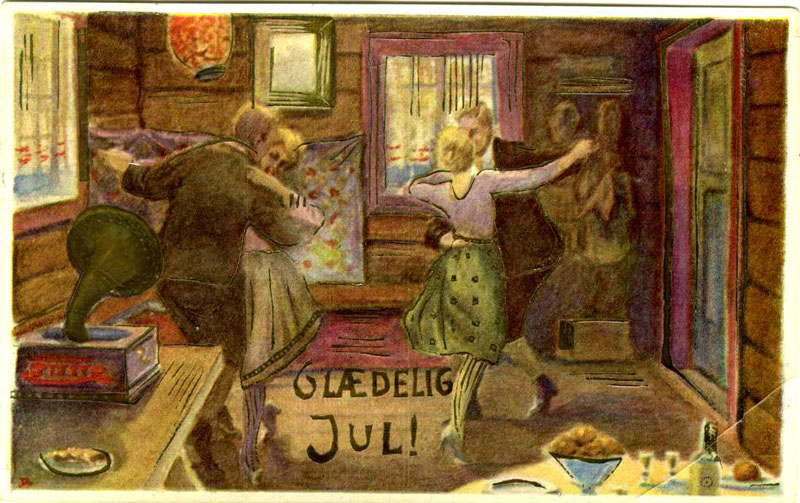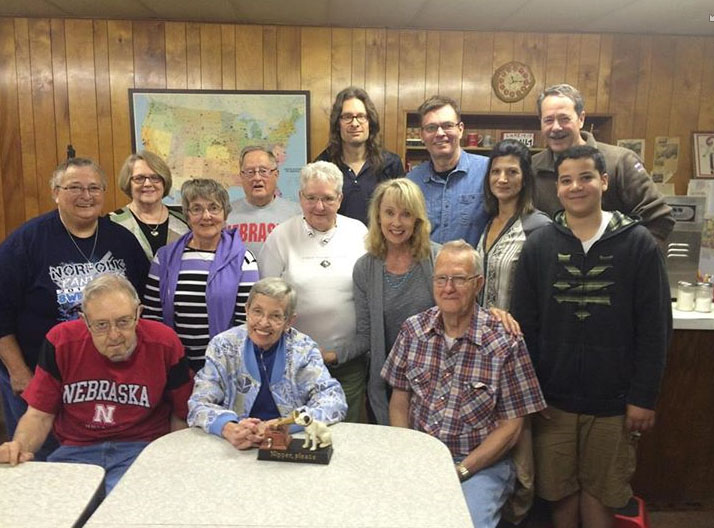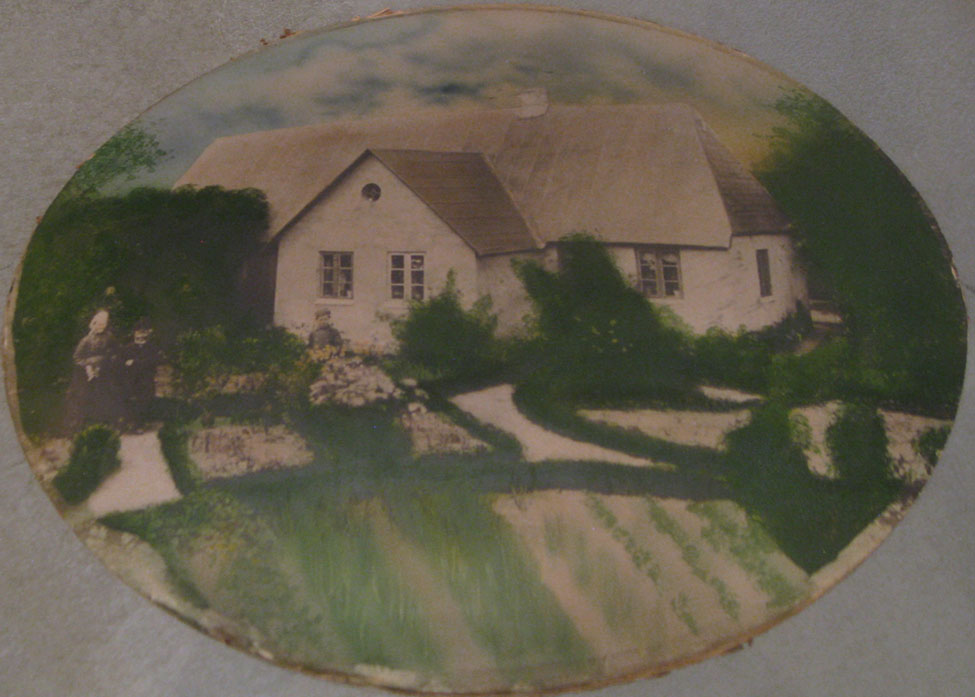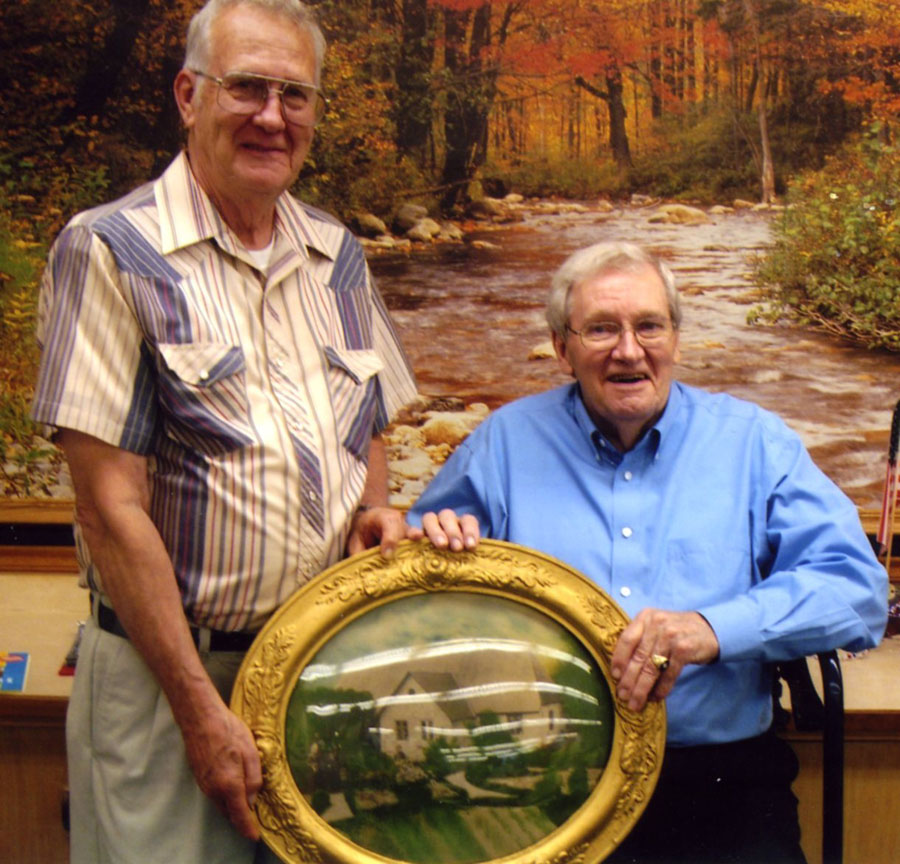Axel Christian Boilesen
Memories of Growing Up - My Danish Heritage
By Axel Boilesen, January 2013
When asked about my memories of growing up on a farm in Nebraska in an area known for its Danish heritage, with neighboring towns called Dannebrog and Dannevirke, I proudly tell everyone that all my grandparents immigrated from Denmark.
The only one of these grandparents that I knew or felt close to was my Dad's mother. Her husband and I share the same name, Axel Christian Boilesen, and he died many years before I was born.My grandmother died in 1934 when I was eleven years old. Considering the large families it is amazing to me how close a bond I feel with her. Maybe it was the good cookies or sugar cubes that were always available. More likely it was the love and attention she gave me.
I'll always remember how she held me when she sat in her rocking chair with me on her lap and we listened to her phonograph playing "The Jolly Coppersmith". She was a little lady (her feet would hardly reach the floor) and she always spoke in Danish. I had no idea what she was saying so I faked responses. When we listened to the phonograph we both enjoyed the moment. If my grandmother spoke to me while I was on her lap and we were listening to the phonograph I think the phonograph saved me from any embarrassment.
The Danish people have been said to be the happiest nationality in the world. One reason they have this reputation is that they have such low expectations (that's a joke).
My observations of why they may rank so high are that it is a small country, with low immigration, and with education all paid for by the government as are all health care expenses. Taxes are high but the average net income is very equal which I think equates to contentment (happiness). A primary reason for high emigration rates from many European countries was jobs. As the families reached or approached maturity jobs became a consideration. Inheritance customs in farming operations were that the oldest male in the family inherited the farm and the younger members had to fend for themselves. I don't know that this was the reason why my grandfather immigrated to the United States and came to Nebraska in the 1880's and I never heard my Dad or my Mom talk about this but I imagine it was the promise of jobs and land and independence.
June 5th is considered Denmark's Independence Day and for all of the Danish communities in our area it was a day the Danish flag was flown. When I was growing up on the farm all field work stopped and we would congregate at the small village of Dannevirke. A ballgame was usually scheduled for the afternoon followed by a large picnic and dance held in the community building.
I have no idea what year those June 5th celebrations may have ceased in Dannevirke but it is still a day I fondly remember. For years I have continued to celebrate June 5 and each year I find joy in writing a letter and a check to each of my children and grandchildren. It is a personal feeling of independence that I hope to continue as long as I am able.
I consider myself a "Happy Dane" but who would not be as happy with such a great family - I love you all.

Danish postcard postmarked December 25, 1923 - the year of Axel's birth
Glædelig Jul!- Danish for Merry Christmas!
Dannevirke Danish Lutheran Church, built in 1906
History of Dannevirke
Courtesy of Nebraska State Historical Society website, August 1996)
Dannevirke by Arthur W. Christensen of Dannebrog, in A Story of the Danish Settlement in Dannevirke, describes the early settlement of this unique Danish hamlet in Howard County.
In February of 1874 Niels Hansen and Soren Johnson homesteaded in northwestern Howard County because of timber and water along the North Loup River and because of the promising soil. Hansen helped with construction of nearby Fort Hartsuff to acquire cash, and in the spring of 1874 broke the first sod in the Dannevirke area.
More Danes settled during succeeding years and decided upon the name "Dannevirke." The name, symbolizing security and protection, had patriotic significance to the Danes, because it referred to a great earthen fortification which had protected Denmark in the Middle Ages.
By 1900 the thrifty Danish farmers felt they could afford a meeting place. They organized the Dannevirke Hall Association and erected the center, dedicated in May 1901. Another boost for the community was the opening of a general store in 1901. Five years later a church was built and later a blacksmith shop was opened. However, the settlement remained a hamlet. The post office was discontinued in 1904.
The founders of the community were successful in establishing Danish customs and maintaining the language. Each June 5 they celebrated Constitution Day, and a harvest festival was held every September. Eventually, however, the isolated Danish hamlet succumbed to the pressures of assimilation. Dannebrog and Nysted, to the south, had larger populations with which to preserve Danish customs.
Miscellaneous Danish facts
Happy Birthday in Denmark - In Denmark you may find that people thank you for the weather on your birthday. It is said that the weather on your special day reflects your behavior over the past year.
Hygge is a Danish and Norwegian word for a mood of coziness and comfortable conviviality with feelings of wellness and contentment.
The word hygge comes from a Danish word meaning "to give courage, comfort, joy".
In both Danish and Norwegian, hygge refers to "a form of everyday togetherness", "a pleasant and highly valued everyday experience of safety, equality, personal wholeness and a spontaneous social flow". The noun hygge includes something nice, cozy, safe and known, referring to a psychological state. Collins English Dictionary defines the word as "a concept, originating in Denmark, of creating cosy and convivial atmospheres that promote well-being". - Courtesy of Wikipedia
The Danish concept – said to make homes nicer and people happier. Pronounced ‘hoo-ga’, this is the Danish coined phrase that can be translated simply as ‘cosiness’ in English. But it’s much more than that, say its aficionados – it’s an entire attitude to life that helps Denmark to be the world’s happiest country. Sitting by the fire on a cold night, wearing a wooly jumper, whist drinking mulled wine – probably surrounded by candles. That’s most certainly “hygge”. Eating home-made pastries. Watching TV under a duvet. Family get-togethers at Christmas, they are too. It was never meant to be translated, but to be felt! - Courtesy of hyggevita.com
June 5 - 1849 Danish Holiday - The signing of the Danish constitution in 1849. Each year Axel and Betty Boilesen celebrated this holiday and remembered their Howard County Nebraska roots which included picnics, ballgames and dances in Dannevirke Nebraska.

Descendants of Chris and Elizabeth Boilesen gathered at the Danish Bakery in Dannebrog May 23, 2015 for a Memorial Day reunion. Visitations of the Dannebrog, Dannevirke, Cotesfield, Elba, St. Paul, Scotia, and Ord cemeteries, the Dannevirke church and the historical village in St. Paul filled the day with memories and appreciation of our family and Danish heritage.

Family home of Johanna Schack near Hoptrup, Denmark, circa 1887.
Pictured are Johanna's stepmother Anna, her father, and a boy on the right who is their foster child.

For more on Axel's family see Axel's Siblings - The Chris Boilesen Family Album